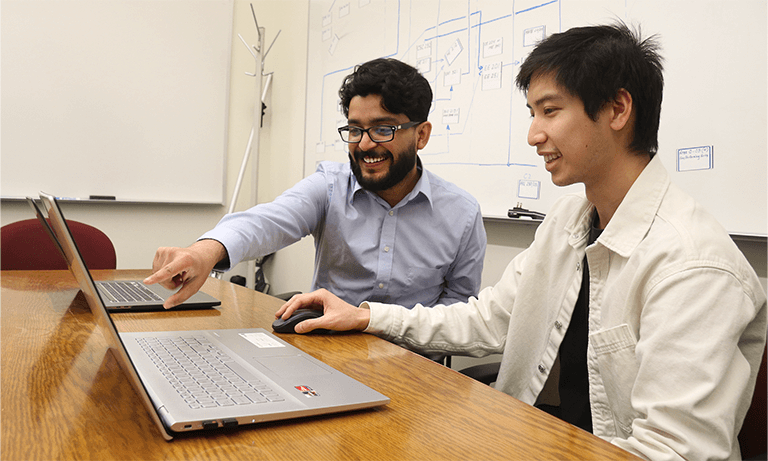As Hurricane Harvey made its devastating landfall in August 2017, a rumor that ran rampant on Twitter posed extreme danger to Houston’s undocumented immigrant community of around 600,000.
The rumor claimed undocumented immigrants could not enter Texas shelters and would be reported to federal immigration agents. Fearing deportation, many hesitated to access a critical resource that was, in fact, open to all.
During a crisis, millions of people turn to social media to find information and ask questions, but over the last decade a growing number of users have used platforms like Twitter to mistakenly or maliciously spread misinformation.
Industrial Engineering Professor Puneet Agarwal is studying tweets linked to seven different rumors – including Hurricane Harvey – to determine the role verified users play in circulating messages over social media when accurate information is crucial to public safety.
“Verified accounts have a large influence over the spread of information on Twitter and can play a key role in the spread of rumors and misinformation,” Agarwal said. “If people with verified accounts are not responsible with their tweets, they can inflict a significant level of damage.”
He also wants to give agencies and social media companies new tools to find and track misinformation so they can make informed decisions on when to use their resources to combat rumors.

Mining the Data
Agarwal’s project involved collecting more than 500,000 tweets from seven different rumors, including natural disasters, COVID, elections and the war in Ukraine, during a three-year span.
Agarwal used tweets as the basis for his social media projects – funded by the National Science Foundation – because Twitter provides easy access to data for researchers, while Facebook and Instagram have more restrictions.
Once collected, the tweets were analyzed through statistical tests, graphs and charts, time series analysis, data mining and machine learning algorithms.
Agarwal’s analysis showed that despite making up less than 2.5% of all tweets about rumors, verified accounts are directly responsible for over 50% of the engagement that tweets about rumors receive and indirectly responsible – through retweets – for more than 16%.
“When you are sharing or liking tweets from verified accounts, people will believe you,” he said.
The finding that surprised Agarwal the most, however, was that verified accounts’ extreme influence on rumor is likely more related to the number of followers they have than the fact their account is verified.
“People actually believe tweets from accounts with a lot of followers whether they are verified or not,” Agarwal said.
Machine Learning
Misinformation amplified on social media and other digital platforms can prove particularly dangerous during crisis events, but tracking multiple false rumors can prove daunting to agencies with limited resources.
To aid agencies with monitoring, Agarwal is developing a machine learning framework that can track multiple cases of misinformation and predict the veracity of tweets spread during crisis events.
Machine learning models can be trained to learn which tweets are disseminating false information based on Twitter data collected from earlier disasters where misinformation was spread.
“We can track how many people are engaged with a rumor and spreading false content,” Agarwal explained.
Agencies then can make informed decisions about the cases they choose to clarify and the timing of their debunking response.
Reacting too quickly can result in a clarification that is imprecise or incomplete, although waiting too long can allow rumors to spread with their full force while officials construct a more complete response, according to Agarwal.
Decision-making can be challenging, Agarwal said, but metrics can help.
“We now have the tools to understand more about the data coming from social media platforms so we can control the spread of misinformation,” he added.
Tips for Navigating Social Media
Agarwal has collected valuable insight for social media users during his extensive research.
Primarily, he said, users should take caution when they have an emotional response to a post or tweet.
“If you are getting emotionally agitated, maybe something is wrong,” he said. “Take time to do your research and talk to your friends before you react or retweet,” Agarwal said.
He also encouraged users to visit fact-checking websites or alternate platforms when looking to verify an assertion.
In addition, users should take caution when digesting information from influencers or others with a large following who may not be making credible claims.
“You shouldn’t take life advice from actors or singers,” Agarwal said with a smile.
By Emily Slater


